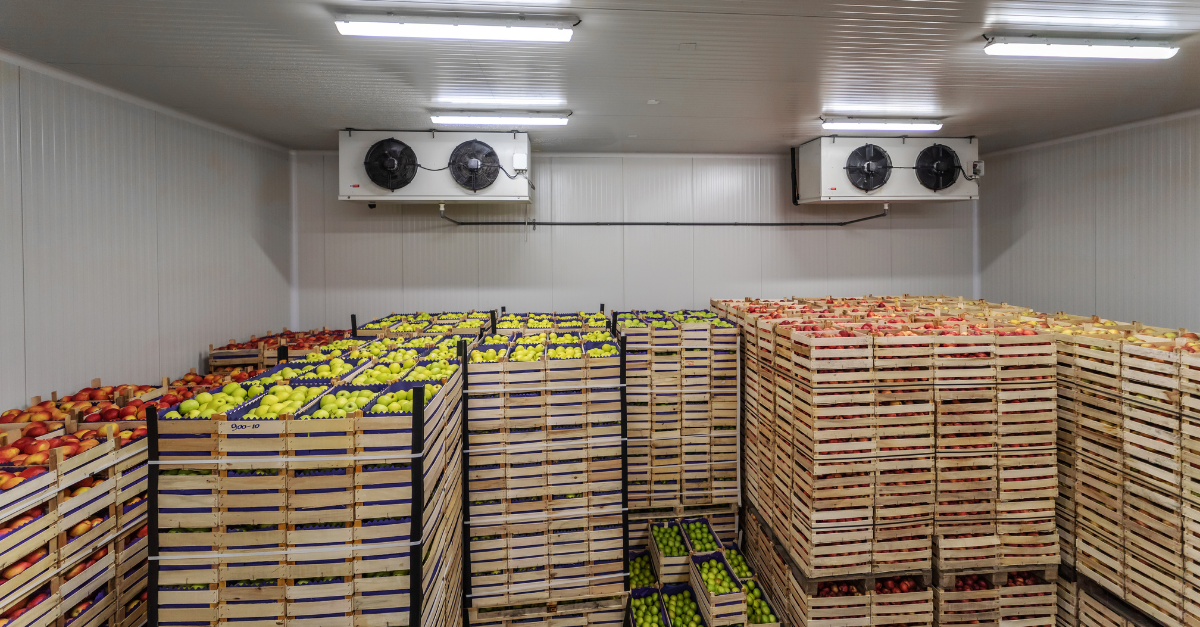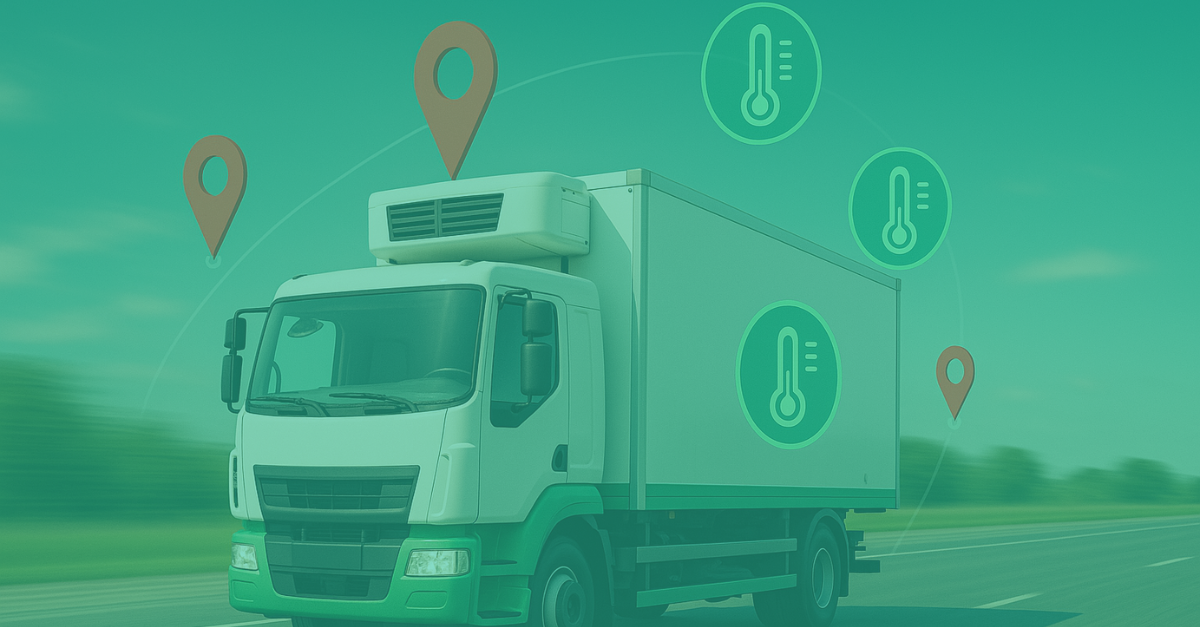In temperature-sensitive logistics, success is measured not just by speed or cost, but by precision. When a shipment of vaccines, fresh produce, or lab samples is compromised due to a delay or a temperature breach, the loss can go far beyond product value. It can affect lives, reputations, and compliance.
That is why companies involved in these critical supply chains are turning to GPS tracking for cold chain logistics. It combines real-time location tracking with environmental sensors to ensure that every shipment is monitored, protected, and verified from origin to destination.
This blog explores how GPS and sensor-based tracking technology is changing the game for cold chain logistics across food, pharmaceuticals, and laboratory sectors. If you’re responsible for maintaining the integrity of goods in transit, the insights here may shape your next big operational upgrade.
Why Cold Chain Logistics Requires a Higher Standard of Tracking
Cold chain logistics is all about maintaining specific temperature ranges for products during transport and storage. When this chain breaks, the consequences can be severe.
Whether it is a pallet of frozen seafood, a shipment of insulin, or blood samples headed to a diagnostic lab, the margin for error is narrow. Even a short-term deviation in temperature or humidity can spoil a product, violate regulatory standards, or trigger legal exposure.
Unlike standard logistics, cold chain operations require tracking solutions that do more than show where a shipment is. They must also show how the shipment is doing. GPS location alone is not enough. Companies need continuous visibility into temperature, humidity, vibration, and other critical environmental factors.
This is where GPS tracking for cold chain logistics proves indispensable.
The High Cost of Cold Chain Failure
Let’s consider what is really at stake.
In the food industry, temperature excursions lead to product spoilage, customer complaints, and sometimes mass recalls. For pharmaceuticals, even minor deviations can render vaccines or biologics ineffective. In laboratories, compromised samples mean inaccurate results, wasted time, and jeopardized research.
It is estimated that nearly 20 percent of temperature-sensitive pharmaceutical products experience some form of cold chain failure. The costs include not just the lost shipment value, but fines, insurance claims, and reputational harm.
Businesses can no longer afford to rely on guesswork or delayed information. They need a way to identify risks as they occur, not after the damage is done.
How GPS Tracking for Cold Chain Logistics Works
Modern cold chain tracking combines GPS technology with environmental sensors into compact, rugged devices that attach to pallets, containers, or individual boxes.
These devices transmit real-time data, including:
- Location coordinates
- Temperature readings
- Humidity levels
- Tilt and vibration
- Tamper or door-open events
This data is transmitted to cloud-based dashboards or mobile apps, giving logistics teams a full picture of shipment status across the entire journey. When any reading crosses a pre-set threshold, an alert is triggered so action can be taken immediately.
This proactive model empowers businesses to intervene in real time rather than respond after it is too late.

Real-Time Visibility Across Food, Pharma, and Lab Shipments
Food Shipments
In the perishable goods sector, timing and temperature control are everything. GPS tracking with environmental sensors helps food distributors:
- Monitor temperature changes across multi-stop deliveries
- Identify exposure during loading, unloading, or delays
- Provide proof of freshness on arrival
- Ensure compliance with food safety standards like FSMA
This kind of visibility is essential to reduce waste and maintain customer trust.
Pharmaceutical Distribution
Vaccines, insulin, biologics, and other pharma products must remain within precise conditions during transit. Any deviation may render them unusable or unsafe.
With GPS tracking for cold chain logistics, pharmaceutical providers can:
- Verify cold chain compliance with regulatory bodies
- Maintain digital chain-of-custody records
- Trigger interventions before a product becomes nonviable
- Satisfy documentation requirements for audits and insurance claims
This not only ensures safety but reduces the risk of costly disruptions.
Laboratory and Research Logistics
Diagnostic specimens, lab reagents, and clinical trial samples all depend on strict temperature control. A sample compromised in transit can invalidate results or compromise an entire study.
Real-time tracking with environmental sensors allows labs to:
- Detect potential sample degradation before it reaches the lab
- Avoid sample rejection and retesting delays
- Ensure consistency across multiple delivery routes and partners
This protects both scientific integrity and business continuity.
From Reactive to Proactive: Data-Driven Cold Chain Management
Traditional tracking methods rely on after-the-fact reporting. By the time you discover a shipment exceeded its temperature range, the loss has already occurred.
GPS tracking for cold chain logistics flips that model by enabling proactive decision-making. Alerts can be sent to logistics managers, drivers, or warehouse staff as soon as a problem is detected.
You can reroute, replace, or even remotely trigger a refrigeration check before products are damaged.
Even better, historical tracking data can help you identify recurring risks—such as specific lanes, loading zones, or carriers that lead to more incidents.
This data-driven approach helps organizations:
- Optimize route selection
- Improve vendor accountability
- Adjust SOPs based on real performance, not assumptions
Building Trust with Clients, Regulators, and End-Users
When you are transporting high-value, high-risk goods, trust is everything.
GPS tracking with environmental sensors gives logistics providers the power to prove compliance, demonstrate proactive management, and assure clients that every step is monitored and controlled.
This is especially important when dealing with auditors, certification bodies, or government inspectors. A clean, digital record of environmental and location data eliminates guesswork and simplifies verification.
And for your customers? Transparency builds confidence. When they know their shipment is being tracked every second, they know they can depend on your business.
What to Look for in a Cold Chain Tracking Solution
Not all tracking systems are created equal. When selecting a provider, consider:
- Sensor precision: Look for calibrated temperature and humidity sensors with proven accuracy
- Battery life: Cold chain trips may span days or weeks, so device longevity matters
- Form factor: Devices should be compact, durable, and easy to apply to your existing packaging
- Alert customization: Choose a system that lets you define temperature thresholds, geofence zones, and escalation paths
- Data integration: Ensure the platform can connect to your ERP, WMS, or other systems for seamless reporting
A solution that looks great on paper but lacks the flexibility to meet your operational reality may do more harm than good.
Cold Chain Confidence Starts with the Right Tools
In the world of temperature-sensitive logistics, every detail matters. It is not just about getting from point A to point B. It is about making sure that what arrives is still safe, effective, and compliant.
GPS tracking for cold chain logistics is no longer an optional add-on. It is a strategic necessity for companies that want to reduce waste, meet compliance standards, and deliver the highest level of quality to their customers.
With the right combination of real-time location data and precise environmental monitoring, businesses can take full control of their cold chain, and earn the confidence of everyone who depends on it.
Ready to Safeguard What Matters Most?
At HoloTrak, we help companies gain complete visibility into their cold chain. Our GPS and sensor-based tracking solutions are designed for the complexity of real-world logistics. If you are ready to protect your products, your reputation, and your future, we are ready to help.

